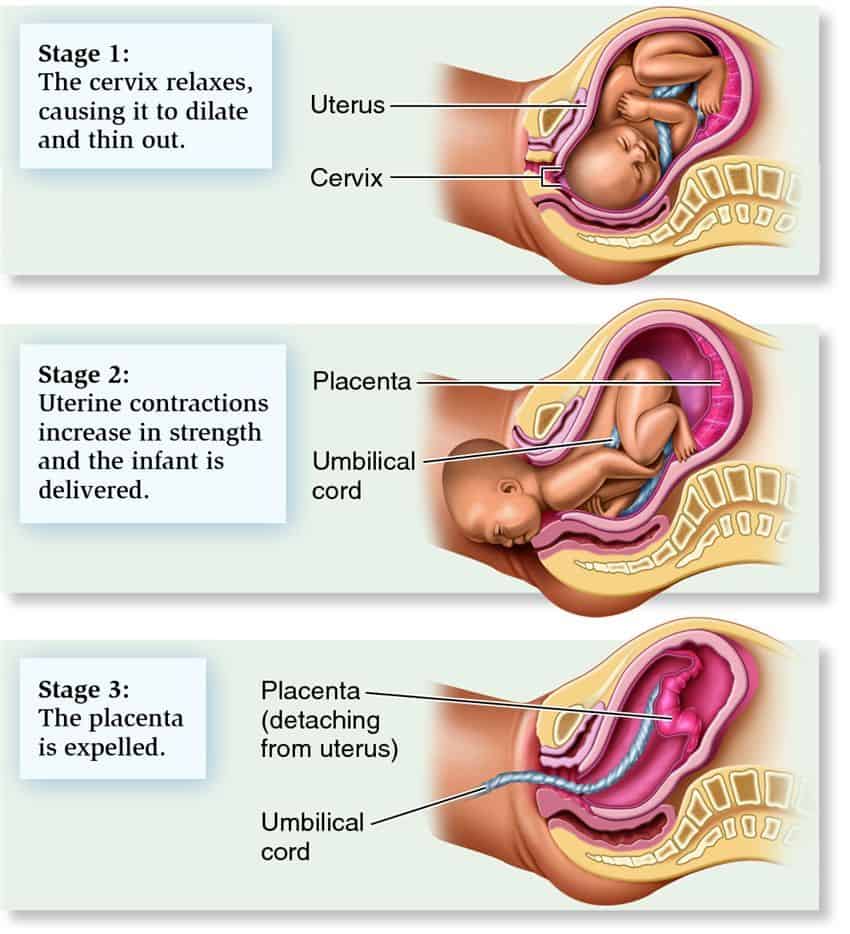The 3 Stages of Labour: A Parent’s Guide to What to Expect
Hello there, wonderful parents-to-be! Preparing for the arrival of your little one is an adventure filled with anticipation, excitement, and yes, a bit of learning too! No need to worry though; I’m here to skip through the topic with you—think of it as a joyful stroll through the garden of knowledge. Let’s talk about something super important—the three stages of labour. Understanding these stages is like having a little roadmap for one of life’s biggest journeys.
What Are the Stages of Labour?
Labour is like a marathon for your body, split into three unique stages. Each stage is a world on its own, with distinct happenings and feelings. By knowing what each stage involves, you can greet them with confidence and a smile!
1. The First Stage: Early, Active, and Transition
- Early Labour: Consider this the ‘warm-up’. It’s the start of your contractions and the gradual opening of your cervix. It’s a time of excitement as you realize “It’s happening!”
- Active Labour: Things get real! Your contractions become stronger, longer, and more frequent. This is when you’ll typically head to your birthing location—if you’re not already there!
- Transition Phase: This is the peak of intensity before you begin pushing. Contractions are powerful and purposeful. Knowing this is a temporary moment can give you the boost to push through, no pun intended!
2. The Second Stage: Pushing and Delivery
- Your cervix is fully dilated, and it’s your cue to push. This stage can last from a few minutes to several hours, but as you work in harmony with your body, each push brings the moment of meeting your baby closer.
3. The Third Stage: Delivering the Placenta
- Once your superstar baby makes an appearance, there’s still a bit of work to do. The delivery of the placenta is the final stage. It usually happens quite naturally with a few contractions and pushes, and then the marathon is over!
So grab a comfy seat, a refreshing drink, and let’s delve deeper into each stage so you can be as prepared as can be!
Delving Deeper Into Stage One: Getting the Party Started
The first stage of labour is all about progression. Here’s where positivity goes a long way!
Early Labour: The Ice Breaker
Early labour is often the longest part of the process but think of it like the opening chapter of a book – setting the scene for the grand story about to unfold. It can be hours or even days, and this variability is perfectly normal. You may experience:
- Mild, irregular contractions that gradually develop a rhythm
- A bloody show (a small amount of blood or mucus discharge).
What to do during early labour:
- Keep hydrated and eat small, energy-packed snacks.
- Focus on relaxation techniques like breathing exercises or listening to soothing music. It’s about making this stage as comfortable as possible.
- If you can, rest and conserve energy for later. So, yes to naps!
As you glide from early to active labour, you’ll feel contractions grow in intensity. Imagine them as waves empowering your body to open up for your baby’s passage.
Active Labour: The Main Event Begins
During active labour, things ramp up. Here, your cervix dilates more quickly, and you’ll feel the need for focused attention and support. It’s important to:
- Breathe deeply and find a comfortable position – movement is your friend. Walking or swaying can actually help progress your labour.
- Stay connected with your partner, doula, or whoever is your birth companion – their encouragement is invaluable.
Remember, each contraction is a step closer to meeting your little munchkin. Embrace the process, and keep visualizing that magical moment!
And when you reach the transition phase, it’s like being at the crest of the hill—almost there!
Transition Phase: Taking the Leap
The transition can be intense, but with intensity comes power. Your body is doing one of the most powerful things it will ever do—prepare to bring a new life into the world. Use this time to delve deep into your strength, knowing that:
- You might experience shakiness, nausea, or feel overwhelmed – this is all normal.
- Deep, controlled breathing is a great tool to ride through the overwhelm.
- Focus on the support of those around you, and remember—you’re doing an extraordinary thing.
The first stage of labour is a journey of changing rhythms, increasing intensity, and the beginning of a transformation that goes beyond the physical—it’s the birth of a new family. We’ll now take a slight pause before we dive into the nitty-gritty details of the second stage of labour. Trust me; you’re going to do amazingly well! Stay tuned for the next portion of our informative guide.

Preparing for the Three Stages of Labour: Five Things Every Parent Should Know
Understanding the Process: Knowledge is Power
When it comes to preparing for labour, understanding what’s going to happen can significantly lessen anxiety. For the first stage, know the signs of early labour, the difference between Braxton Hicks contractions (false labour) and the real thing, and what it means when your water breaks. For the second stage, understand the pushing techniques and the importance of following your body’s lead. Finally, for the third stage, know the signs of delivering the placenta and the importance of skin-to-skin contact soon after birth.
Creating a Birth Plan: Your Personal Preferences
Your birth plan is like a wishlist for how you’d like labour and delivery to go. This plan can cover everything from pain relief options to who you want present during birth. Make sure to discuss and share your birth plan with your healthcare provider well before your due date, but also remember, flexibility is key! Labour can be unpredictable, so be prepared for deviations from your plan.
Pain Management Options: Keeping Comfortable
Understanding pain management options is crucial. Would you prefer a natural birth, or are you open to using medication like an epidural? Research and discuss options like breathing techniques, hypnobirthing, or water birthing for natural pain management. For medical pain relief, learn about the types of medications available and understand their potential effects on your labour experience.
Preparing Your Body: Physical and Mental Readiness
Labour is physically demanding, but with some prep, you can help your body be ready for the marathon. Prenatal exercises, particularly pelvic floor exercises, can be immensely helpful. Likewise, mental preparation through prenatal classes, meditation, or visualization techniques can empower you to tackle the challenges of labour positively and calmly.
Support System: Choosing Your A-Team
Decide who you want by your side to support you during this time. Whether it’s your partner, a close family member, a friend, or a doula, having a solid support team can make a significant difference in your labour experience. Discuss your birth plan with them and let them know how they can best support you throughout each stage.
The Second Stage of Labour: The Big Push and Beyond
Now we come to the grand finale—the actual birth of your little miracle. Those many hours of labour have been leading up to this prime time: the second stage of labour.
The Pushing Phase: Meeting Your Baby
When your cervix is fully dilated, it’s game time. This stage is where your active participation coupled with your body’s natural instincts come into play. It’s time to push! Here are a few tips:
- Listen to your body and push when you feel the urge. If you’ve had an epidural, your healthcare provider will guide you on when to push.
- Try different positions if possible. Squatting, kneeling, or lying on your side may help you push more effectively than lying on your back.
- Remember, it’s important to rest between contractions. Conserve your energy for when it’s needed!
After those purposeful pushes, the incredible happens: your baby is born. The feeling is unparalleled as they are placed upon your chest, and the second stage of labour comes to a breathtakingly beautiful close.
Third Stage of Labour: The Final Stretch
It’s not quite over once your baby makes their debut. The delivery of the placenta is the final phase of the birthing process. Contractions will continue, but they are usually less intense. It’s important to:
- Stay relaxed and follow your healthcare provider’s instructions regarding pushing to deliver the placenta.
- Be aware you may experience a brief period of shaking or chills as the placenta is delivered—this is normal.
With the placenta delivered, congratulations are in order! You’ve completed the marathon that is labour and birth, and you’ve done it with strength and grace.
We’ve danced through the details of what to expect during the stages of labour, and now it’s your turn to shine. Keep these highlights and tips tucked into your heart as you prepare for the big day. The journey through labour is one incredible path of the larger adventure of parenthood, and I cannot wait for you to experience the pure joy that awaits at the end of these stages.
Now, deep breaths and forward we go—towards one of the most wondrous experiences life has to offer. You’ve got this! ?
See more great Things to Do with Kids in New Zealand here. For more information see here
Disclaimer
The articles available via our website provide general information only and we strongly urge readers to exercise caution and conduct their own thorough research and fact-checking. The information presented should not be taken as absolute truth, and, to the maximum extent permitted by law, we will not be held liable for any inaccuracies or errors in the content. It is essential for individuals to independently verify and validate the information before making any decisions or taking any actions based on the articles.




